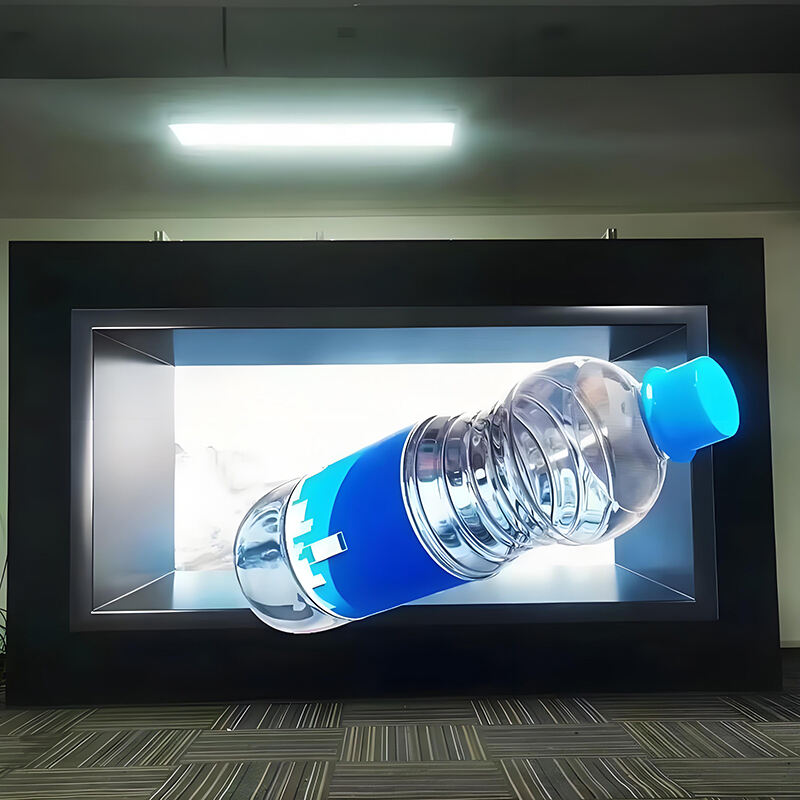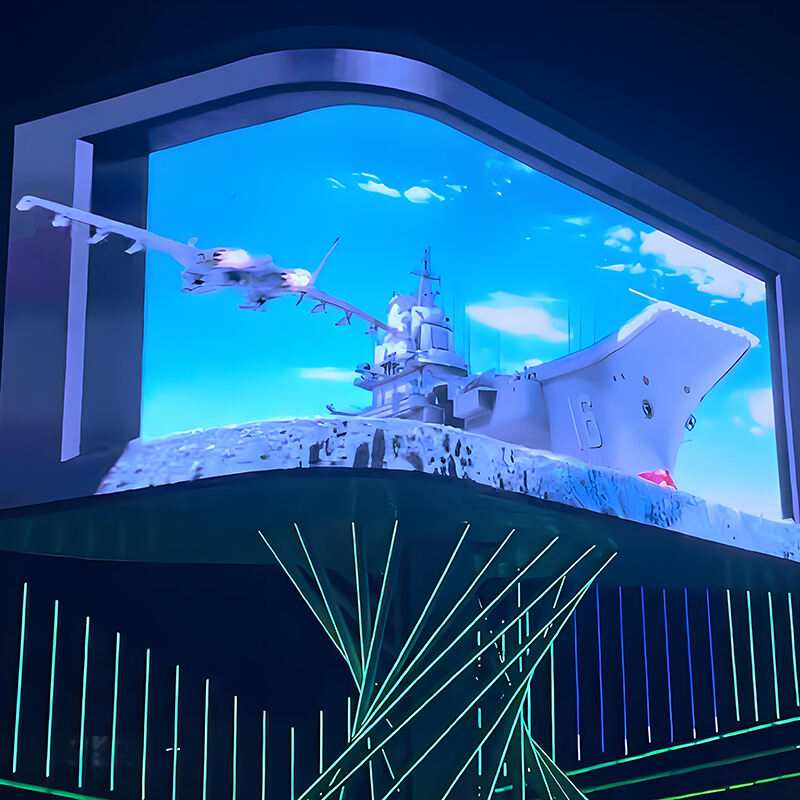LED 디스플레이 수리 가능성 평가: 부품, 진단 및 의사결정
현대 LED 디스플레이는 수리 가능 여부에 영향을 미치는 여러 정비 가능한 부품을 포함하고 있습니다. 어떤 부품을 복원할 수 있는지 이해하면 기술자와 사용자가 유지보수 결정을 보다 현명하게 내릴 수 있습니다.
수리 또는 교체가 가능한 LED 디스플레이의 주요 구성 요소
수리 가능성 여부를 결정하는 주요 요소 네 가지는 다음과 같습니다:
- LED 모듈 – 클러스터 단위로 구성된 다이오드 그룹(일반적으로 16x16 또는 32x32 픽셀)
- 드라이버 IC – 개별 픽셀에 제어 전압을 분배함
- 전원 공급 장치 – AC를 DC로 변환하면서 전류를 조절함
- 신호 연결 장치 – 디스플레이 구역을 연결하는 리본 케이블 및 입력 포트
현장 데이터에 따르면 단색 디스플레이 고장의 72%가 전원 장치 결함에서 비롯되며, 풀컬러 패널 문제의 64%는 드라이버 IC 고장과 관련이 있습니다. (조명 기술 연구소, 2025)
LED 디스플레이 고장의 일반적인 증상과 조기 탐지 기술
능동 모니터링을 통해 문제를 조기에 발견하여 연쇄적 손해를 방지할 수 있습니다:
- 색상 균일성 저하 – 15% 이상의 편차를 보이는 부분적 변색
- 픽셀 드롭아웃 패턴 – 드라이버 문제를 나타내는 기하학적 고장 클러스터
- 전원 사이클링 증상 – 열 패턴이 동반된 무작위 종료 현상
- 신호 손상 아티팩트 – 데이터 집약적 시퀀스에서 발생하는 무작위 콘텐츠
최근 디스플레이 유지보수 시험에 따르면, 적외선 열화상 촬영을 사용하면 수동 점검 대비 진단 시간을 38% 단축할 수 있습니다.
문제 진단: 시각적 증상에서 근본 원인 파악까지
체계적인 접근 방식으로 고장 원천을 격리함:
| 증상 그룹 | 영향을 받을 가능성이 높은 부품 | 진단 도구 |
|---|---|---|
| 증상 그룹 | 영향을 받을 가능성이 높은 부품 | 진단 도구 |
| 부분적 블랙아웃 | 신호 처리 장치 | 오실로스코프, 열화상 카메라 |
| 색상 밴딩 현상 | 신호 처리 장치 | 오실로스코프, 열화상 카메라 |
| 색상 밴딩 현상 | 신호 처리 장치 | 오실로스코프, 열화상 카메라 |
기술자는 고장 가능성에 따라 부품 테스트를 우선순위로 진행함 - 커패시터 및 커넥터가 초기 수리 사례의 57%를 차지함(AV Maintenance Report 2025 기준).
수리 vs. 교체: 비용, 시간, 장기적 실행 가능성 평가
비용-편익 분석 매트릭스는 이해관계자들이 수리와 전체 모듈 교체 중 어떤 선택지를 채택할지 결정하는 데 도움을 줍니다.
| 비용 | 40-60% 절약 | 보증 준수 |
|---|---|---|
| 내구성 | 1-3년(일반적 수명) | 3-5년(새로운 부품 수명) |
기술자들은 고장 가능성에 따라 구성 요소 테스트를 우선시합니다. 커패시터나 오래된 전원 장치와 같은 일반적인 고장은 주요 수리 전에 멀티미터와 같은 도구를 사용하여 집중 테스트가 필요합니다.
일반적인 LED 디스플레이 고장과 효과적인 문제 해결 방법
화면 깜박임: 전원 및 신호 관련 원인 식별
LED 디스플레이의 화면 깜박임은 전원 공급 연결 문제, 마모된 케이블 또는 오래된 드라이버로 인해 발생하는 경우가 많습니다. 먼저 전원 입력을 점검하고 전압을 측정한 후 HDMI 또는 DisplayPort 케이블을 손상 여부로 검사하고 디스플레이 컨트롤러에 최신 펌웨어가 설치되어 있는지 확인하십시오. 고장난 드라이버 IC의 솔더 포인트를 재가열하고 재밀봉하는 방법으로 부품 교체 전에 지속적인 깜박임을 해결할 수도 있습니다.
수평 또는 수직 라인: 신호 문제와 하드웨어 결함 구분하기
수직 및 수평 라인이 신호 문제나 하드웨어 고장을 나타낼 수 있습니다. 먼저 비디오 케이블과 다양한 입력 소스를 교체해 보세요. 이를 통해 신호 오류인지, 특수 도구를 사용한 회로 수준의 수리가 필요한 결함난 커넥터 문제인지 격리할 수 있습니다. 열화상 진단을 통해 시각 왜곡을 유발하는 과열 부품을 확인하고 손상된 드라이버 칩 또는 열/행 드라이버를 대상으로 교체할 수 있습니다.
백라이트 문제: 인버터, 전원 공급 장치, 드라이버 IC 진단
백라이트가 작동하지 않을 경우, 필요한 AC 전압을 공급하는 역할을 하는 인버터와 전원 공급 장치를 점검하십시오. 부품들이 제조사의 출력 사양을 충족하는지 확인하여 전체 교체에 따른 비용을 피하십시오. 국소적인 어두운 점이 발생하는 경우에는 정전기 방지 조치를 준수하면서 다른 부품을 보호하는 동시에 기능이 오작동하는 LED 드라이버 IC를 찾아내는 데 집중해야 합니다.
LED 디스플레이의 물리적 및 환경적 손상: 원인과 해결책
균열 및 물 노출을 포함한 물리적 손상의 경우, 즉시 전원을 차단하고 부품을 신중하게 건조시켜야 합니다. 이후 내부 손상 여부를 점검하여 추가 문제를 예방할 수 있습니다. 습도나 먼지 축적이 디스플레이 고장의 38%까지 발생시킨다는 연구 결과가 있습니다(DisplayMate 2023). 극한의 온도는 납땜 부위의 열화를 유발하고, 대기 중 습기는 산화를 일으킬 수 있습니다. 이러한 문제를 완화하기 위해 실외에서는 보호 케이스를 사용하고, 기후 조절 장치와 연동하여 관리하며, 실내 설치 시에는 정기적인 유지보수 및 서지 억제 기준을 적용하여 민감한 회로에 전압 관련 손상을 방지해야 합니다.
LED 디스플레이 제작 과정에서의 품질 관리 및 테스트 절차
품질을 유지하기 위해 LED 제조사는 3단계 검증 프로세스를 적용합니다. 첫째, 조립 전에 LED를 고온 및 고습 환경에서 48시간 동안 가속 노화 테스트에 돌입합니다. 둘째, 조립이 완료된 후에는 색상 편차 및 누락된 픽셀을 찾기 위한 체계적인 테스트를 진행합니다. 마지막으로 상업적 출시 전에 최대 밝기에서 72시간 동안 지속적인 번인 분석을 실시합니다. 어느 단계에서든 실패한 제품은 최상급 산업용 등급 공급업체의 거의 제로 결함 출력을 지원하기 위해 즉시 제거됩니다.
자주 묻는 질문 섹션
수리 가능한 LED 디스플레이의 주요 구성 요소는 무엇인가요?
LED 디스플레이에서 수리 또는 교체 가능한 주요 구성 요소로는 LED 모듈, 드라이버 IC, 전원 공급 장치 및 신호 커넥터가 포함됩니다.
LED 디스플레이 고장의 일반적인 증상은 무엇인가요?
LED 디스플레이의 고장 일반적인 징후로는 색상 균일성 상실, 픽셀 드롭아웃 현상, 전원 사이클링 증상, 그리고 신호 손상 아티팩트가 있습니다.
기술자는 LED 디스플레이 문제를 어떻게 진단하나요?
기술자들은 오실로스코프, 열화상 카메라, 멀티미터, 전류 추적장치 및 ESR 미터와 같은 진단 도구를 사용하여 고장 가능성이 높은 부품을 테스트함으로써 체계적인 접근법을 사용하여 고장 원인을 격리합니다.
LED 디스플레이 수리와 교체의 장점은 무엇인가요?
LED 디스플레이를 수리하는 경우 비용을 40~60% 절감할 수 있지만, 교체는 보증 규정 준수와 더 긴 부품 수명을 보장할 수 있습니다.
물리적 손상과 환경적 요인이 LED 디스플레이에 어떤 영향을 미칠 수 있나요?
물리적 손상(예: 균열, 침수)은 LED 디스플레이에 큰 문제를 일으킬 수 있습니다. 추가 손상을 방지하기 위해서는 즉시 전원을 차단하고 부품을 건조시켜야 합니다. 고온 및 습도와 같은 환경적 요인은 산화 및 리드 열화를 통해 고장을 유발할 수 있습니다. 모든 사용 사례에서 정기적인 유지보수 및 보호 조치를 권장합니다.











